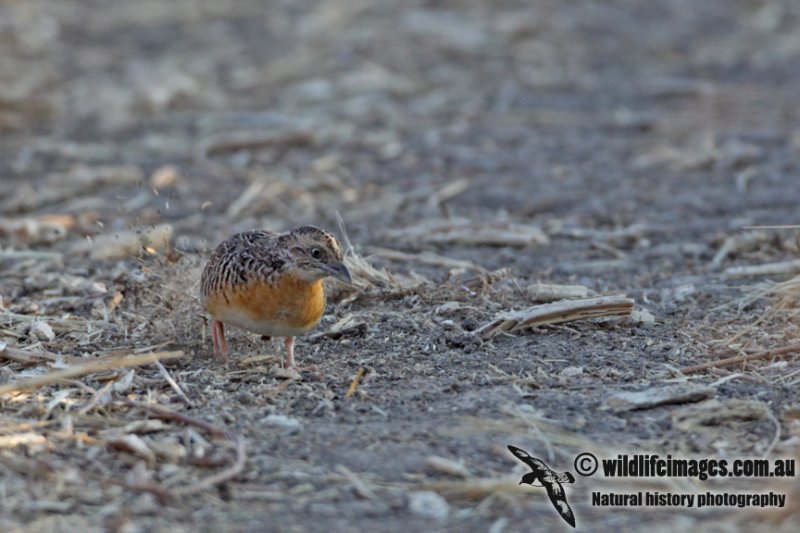
Turnix pyrrhothorax
TAXONOMY
Hemipodius pyrrhothorax Gould, 1841, Aberdeen, New South
Wales. Closely related to Worcester’s and Sumba buttonquails
(T. worcesteri and T. everetti, respectively), which may be subspecies.
Australian little buttonquail T. velox also related to this
species group.
OTHER COMMON NAMES
English: Chestnut-breasted, red-breasted, rufous-breasted, or
yellow buttonquail; French: Turnix а poitrine rousse; German:
Rotbrust-Laufhьhnchen; Spanish: Torillo Pechirrufo.
PHYSICAL CHARACTERISTICS
4.7–6.3 in (12–16 cm); male 1–1.6 oz (27–46 g), female 1.5–2.7
oz (43–76 g). Small buttonquail, gray with rusty red breast,
scalloped sides, stout bill, and pale eyes. Female larger, with
brighter red breast. Juvenile smaller, browner, and more mottled,
with scalloped breast.
DISTRIBUTION
Northern and eastern Australia.
HABITAT
Grassland, grassy woodland, and cropland with dense ground
cover.
BEHAVIOR
Terrestrial, diurnal, and partly nocturnal. Migrates at night.
Territorial when breeding.
FEEDING ECOLOGY AND DIET
Eats seeds and insects obtained by gleaning and scratching on
the ground. Mostly granivorous.
REPRODUCTIVE BIOLOGY
Lays in spring and summer in the south of its range and autumn
to spring in the tropics. Females sequentially polyandrous.
Clutch usually four eggs, though up to five. Incubation 13–18
days. Chicks reach adult size in six to eight weeks and acquire
adult-like plumage at two to three months.
CONSERVATION STATUS
Not threatened. Widespread and uncommon to locally common;
possibly declining in south Australian agricultural regions.
Very similar forms T. worcesteri and T. everetti classified
as Vulnerable; these are very poorly known restricted-range
endemics in Philippine and Lesser Sunda islands.
SIGNIFICANCE TO HUMANS
Hunted by Australian Aborigines for food. Established in aviculture.
Other popular Animals
Photo Gallery of - Red-chested buttonquail
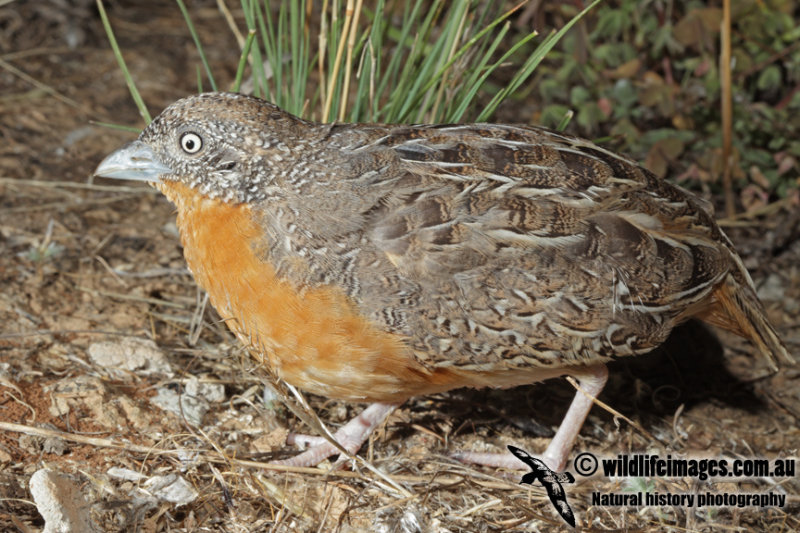
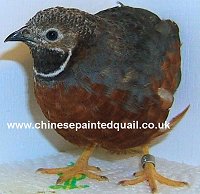
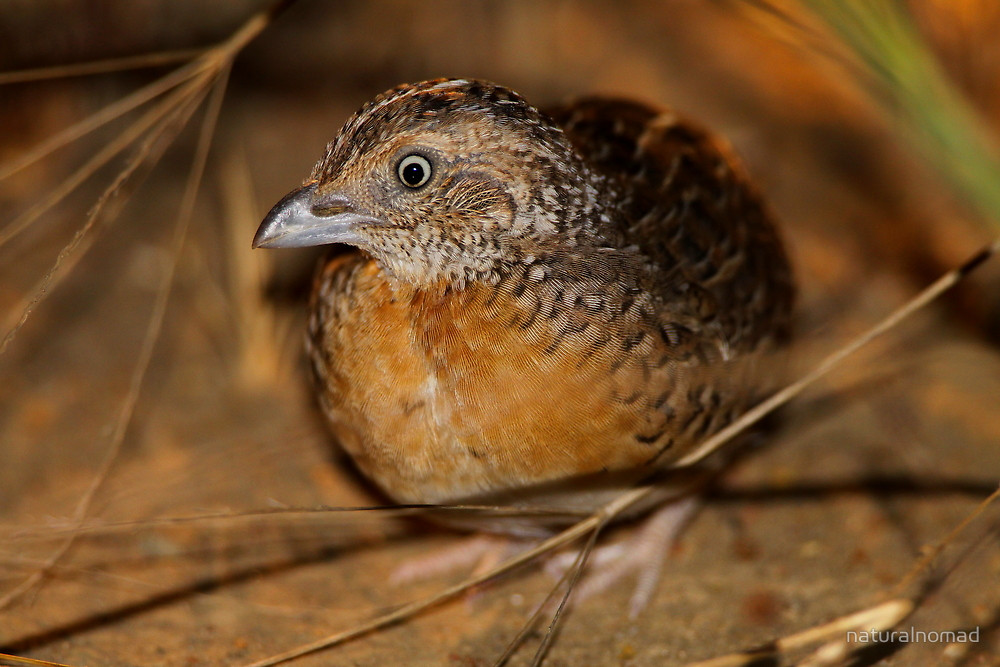
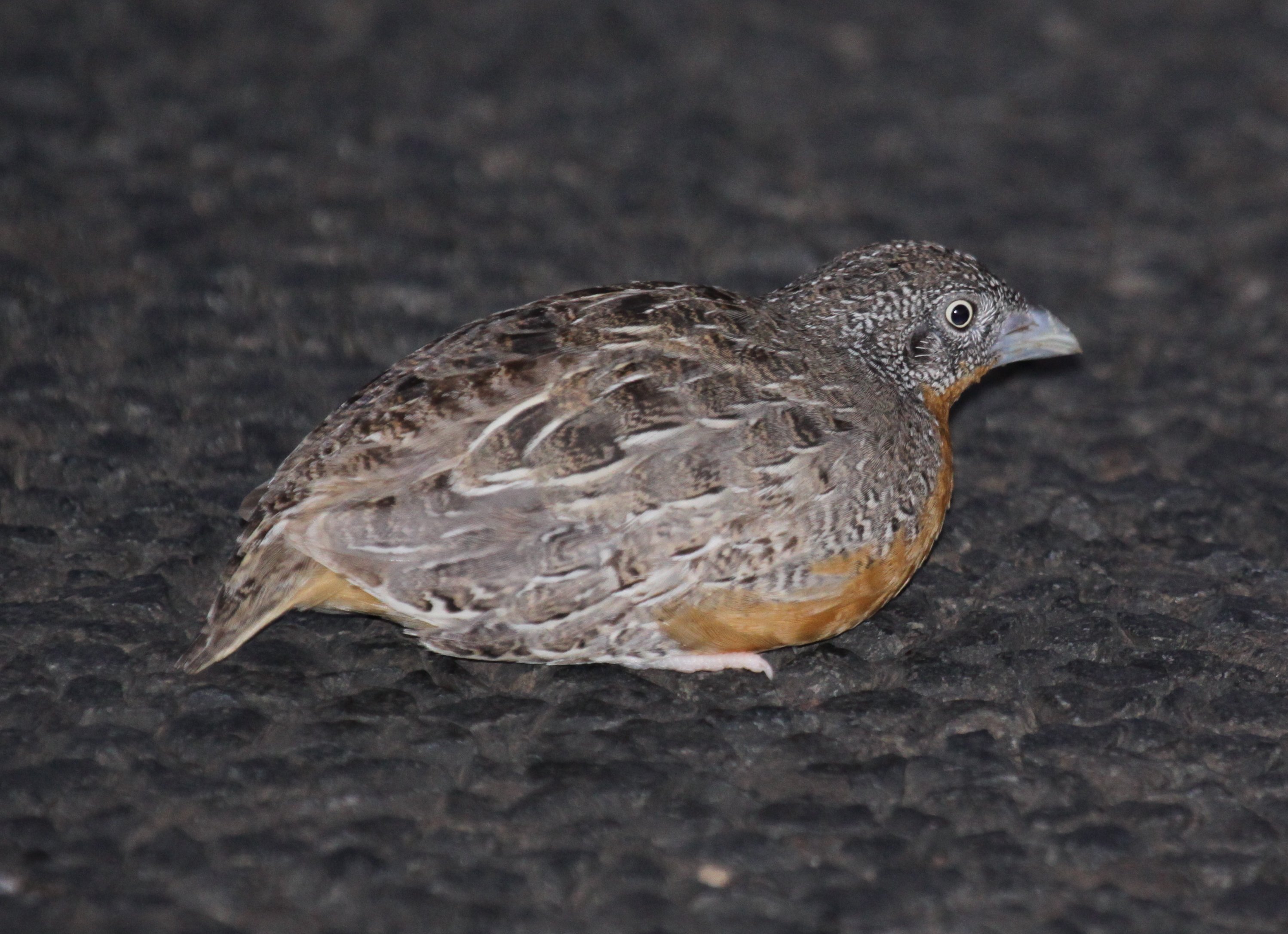
 Animalia Life
Animalia Life